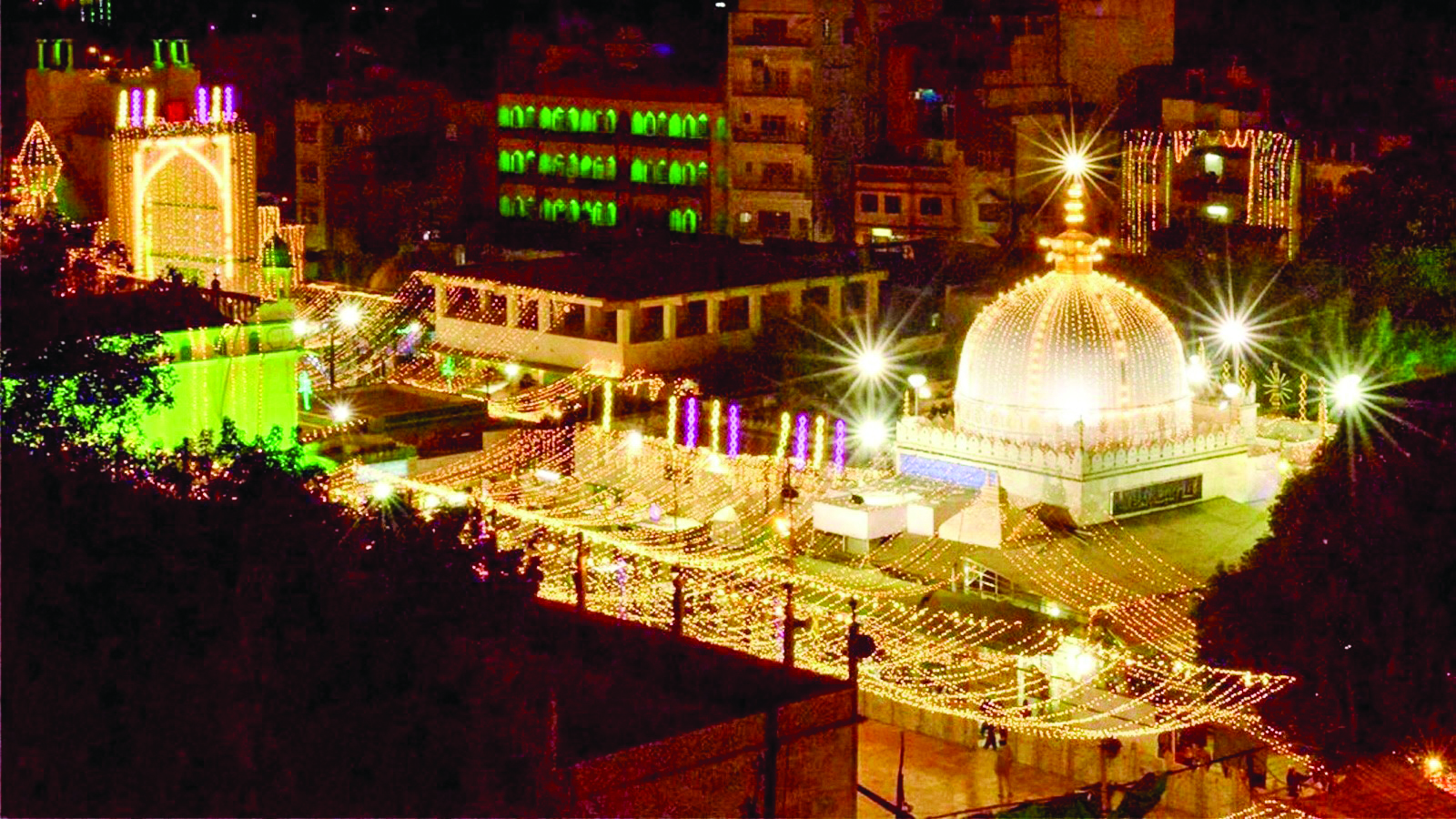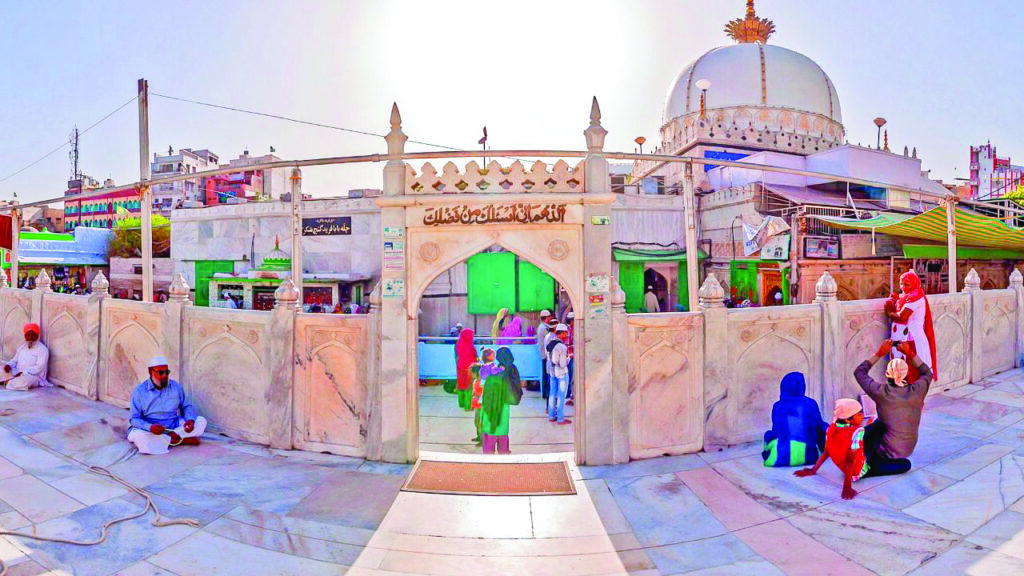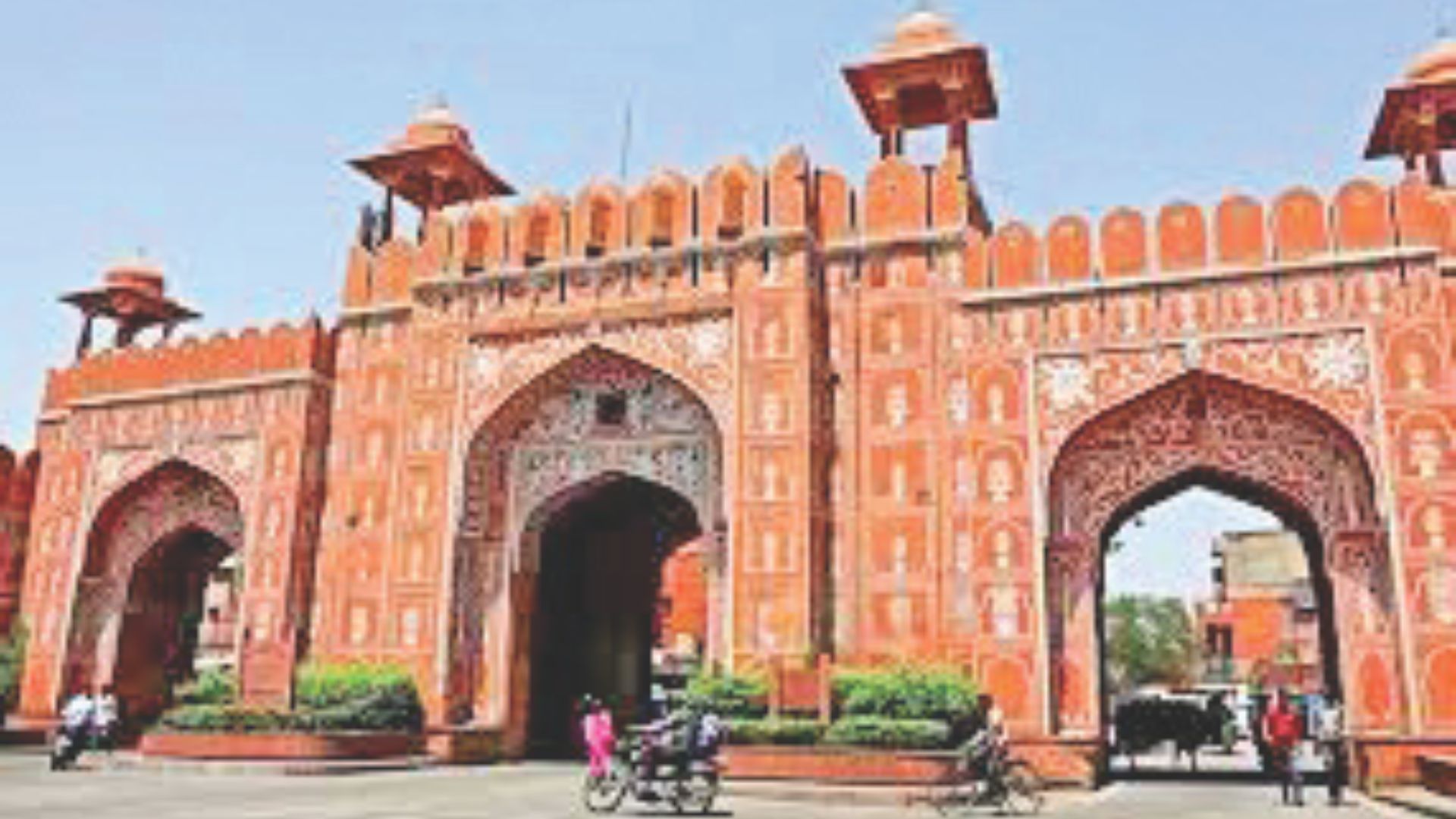
The Ajmer Sharif Dargah stands as a luminous beacon of spiritual enlightenment and interfaith harmony. This sacred shrine, dedicated to the revered Sufi saint Khwaja Moinuddin Chishti, has drawn millions of devotees across religious boundaries for over eight centuries, making it one of the most significant spiritual centers in South Asia.
The Saint Who Changed India
Khwaja Moinuddin Chishti, affectionately known as ‘Gharib Nawaz’ (Benefactor of the Poor), arrived in Ajmer in 1192 CE after a spiritual journey through the great Islamic centers of Central Asia. The saint’s choice of Ajmer was significant, then a center of Hindu pilgrimage, it would become a testament to his message of universal brotherhood and compassionate service.
The Khwaja’s teachings were revolutionary for their time. He emphasized love, tolerance, and unity, famously declaring, “The highest form of devotion is to feed the hungry, help the oppressed, and comfort the distressed.” These principles formed the foundation of the Chishtiya order of Sufism, which would profoundly influence Indian spirituality and culture.
Architectural Splendor and Sacred Spaces
The Dargah complex unfolds like a spiritual narrative carved in stone. The journey begins at the magnificent Nizam Gate, an architectural masterpiece donated by Hyderabad’s last Nizam. This first glimpse reveals the synthesis of Mughal, Persian, and Rajasthani architectural styles that characterizes the entire complex.
Beyond the gate, the courtyard opens to reveal the shrine’s most striking feature the white marble dome that crowns the tomb chamber. The dome, visible from across Ajmer, serves as both an architectural marvel and a spiritual compass for pilgrims. Intricate calligraphy adorns the walls, weaving Quranic verses with Persian poetry in a mesmerizing display of Islamic art.
The heart of the complex is the sanctum sanctorum, where the Khwaja’s tomb lies beneath layers of flowers and chadar (ritual cloth offerings). The famous brass railings, a gift from the Nizam of Hyderabad, encircle the tomb. Countless threads tied by devotees create a vibrant tapestry of hopes and prayers, each knot representing a wish made with pure intention.
Living Traditions, The Pulse of Devotion
The Dargah breathes with daily rituals that have remained unchanged for centuries. The day begins with the pre-dawn ‘Khadim’ ceremony, where the shrine’s hereditary custodians open the sanctum doors with traditional ceremonies. The evening brings the soul-stirring sounds of Qawwali, as musicians perform mystical songs in the courtyard, creating an atmosphere where the material world seems to dissolve into the spiritual.
Perhaps the most remarkable tradition is the langar (community kitchen), symbolized by two massive bronze cauldrons. The larger deg, donated by Emperor Akbar, can prepare food for thousands. This tradition of feeding everyone, regardless of faith or status, embodies the Khwaja’s teachings of equality and service.

Festivals and Spiritual Gatherings
The annual Urs festival, marking the death anniversary of Khwaja Moinuddin Chishti, transforms the Dargah into a magnificent spectacle of devotion. For six days, the shrine complex resonates with continuous qawwali performances, spiritual discourses, and prayers. Pilgrims from across the globe participate in rituals that include the ceremonial cleaning of the tomb chamber and the distribution of sacred food.
During the festival, the distinction between religions blurs as Hindu devotees join Muslim pilgrims in offering flowers and prayers. This interfaith harmony is not coincidental, it reflects the Khwaja’s universal message that transcends religious boundaries.
Modern Impact and Social Role
Today, Ajmer Sharif is more than a spiritual center; it’s a dynamic institution that influences various aspects of society. The Dargah committee manages educational institutions, healthcare facilities, and charitable programs that serve the local community. The economic impact on Ajmer is substantial, with thousands of families dependent on shrine-related activities, from crafting ritual items to providing accommodation for pilgrims.
The shrine’s influence extends into contemporary discourse on religious harmony and cultural integration. In an era of increasing polarization, Ajmer Sharif stands as a living example of India’s syncretic traditions. Scholars and peace activists often cite it as a model for interfaith dialogue and understanding.
Preservation and Future Challenges
The Dargah faces modern challenges while maintaining its ancient traditions. The growing number of pilgrims puts pressure on the historical structure and facilities. Conservation efforts must balance preservation needs with accessibility requirements. Environmental factors, including air pollution and weather exposure, threaten the delicate architectural features.
However, innovative solutions are being implemented. Digital documentation of the shrine’s art and architecture helps preserve its cultural heritage. Modern crowd management systems help maintain the spiritual atmosphere despite large visitor numbers. The Dargah committee works with conservation experts to protect the structure while respecting its historical integrity.
Legacy and Continuing Influence
The impact of Ajmer Sharif extends far beyond its physical boundaries. The shrine has inspired countless works of literature, art, and music. Its principles of universal brotherhood and compassionate service continue to influence new generations. The Dargah’s library preserves valuable manuscripts and texts, making it a center for Islamic studies and Sufi research.
The shrine’s message remains remarkably relevant in the contemporary world. Its emphasis on unity, compassion, and spiritual enlightenment offers guidance in addressing modern social challenges. The continuous flow of visitors from diverse backgrounds testifies to the enduring appeal of its spiritual teachings.
Ajmer Sharif represents more than a historical monument or religious shrine; it embodies a living tradition of spiritual enlightenment and social harmony. The lamp of divine love lit by Khwaja Moinuddin Chishti continues to illuminate paths for spiritual seekers. In a world often divided by religious and cultural differences, this sacred space reminds us of the universal values that unite humanity: love, service, and compassion.
As pilgrims continue to cross its threshold, Ajmer Sharif stands as a testament to the enduring power of faith to transcend boundaries and transform lives. It remains not just a destination for spiritual seekers but a symbol of hope for a more harmonious world.
The Untold Stories of Ajmer Sharif
Beyond the well-documented history and traditions of Ajmer Sharif lie fascinating aspects that few visitors know about. Deep within the Dargah complex exists a network of underground chambers known as ‘tehkhanas,’ which once served as meditation spaces for advanced Sufi practitioners. These chambers, maintained at constant temperatures throughout the year, were designed using advanced architectural principles that enabled natural ventilation and acoustic properties perfect for spiritual contemplation.
The Dargah also houses a remarkable collection of ancient manuscripts, including some unique copies of the Quran dating back to the 13th century. These manuscripts feature intricate calligraphy styles specific to the Indian subcontinent, demonstrating the evolution of Islamic art in South Asia. The library contains personal letters between the Khwaja and his disciples, offering intimate insights into the early development of Sufism in India.
One of the most intriguing features is the ancient water management system. The complex includes a series of underground aqueducts that once supplied water to different parts of the shrine. These channels, some still functional, demonstrate sophisticated medieval engineering. The system includes natural filtration mechanisms using layers of sand and charcoal, ensuring pure water for ritual purposes.
The shrine’s acoustic design is another marvel. The main dome is constructed in such a way that it creates a natural amplification effect, allowing prayers recited at the tomb to be heard clearly throughout the courtyard without modern sound systems. This architectural feature was intentionally designed to facilitate the spread of spiritual teachings and prayers.
These hidden aspects of Ajmer Sharif reveal the sophisticated planning and deep spiritual thought that went into creating not just a shrine, but a complete ecosystem for spiritual growth and community service.














